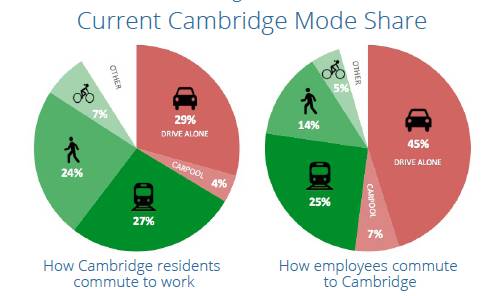- CDD>
- News>
- Transit Strategic Plan Interim Report Now Available
Transit Strategic Plan Interim Report Now Available
2/3/2014 • 10 years ago
 The information on this page may be outdated as it was published 10 years ago.
The information on this page may be outdated as it was published 10 years ago.
Transit Strategic Plan Interim Report
Cambridge has released an interim report on our Transit Strategic Planning process, which can be viewed and downloaded here.
Better public transportation is critical for our city to meet our economic development, livability, social equity, and environmental objectives. Yet with $9 billion of debt and $3 billion in unfunded but necessary maintenance, the MBTA is struggling to operate the current system, let alone expand. In January 2013, we launched a 2-year public transit strategic planning process focusing on the City of Cambridge. The purpose is to develop an action plan for how Cambridge will take a stronger leadership role to improve quality and expand capacity of our transit system. An external stakeholder advisory committee has been formed to advise the city throughout this process, and city staff have been working closely with the MBTA. Together, we have developed the following seven overarching goals:
Goal 1: Mobility
Ensure that the transit system provides for the mobility needs of Cambridge residents and visitors, including trips to work, school, shopping, and recreation. Our future transit needs resulting from regional growth and development, as well as changing demographics, must be understood.
Goal 2: Funding
Ensure that the legislature adequately funds our transit system, keeps it affordable, and has the regional common good at its core.
Goal 3: Efficiency and Reliability
Improve efficiency of transit trips such that travel times are equal to or less than equivalent driving times. Our system needs to be more dependable and reliable.
Goal 4: Expansion
Expand the capacity of rapid transit and bus service by increasing frequency, extending existing routes, and adding new routes.
Goal 5: Usability, Accessibility, and Safety
Improve system access for all users by emphasizing interconnectivity between transit and other modes (e.g., walking and biking), accessibility for persons with disabilities or mobility impairments. Safety, convenience, human-centered design, good way-finding, and real-time service information are important elements of a world-class transit system.
Goal 6: Public Participation, Support, and Outreach
Engage the public in the planning process, better inform them about the issues facing the future of Cambridge, and gain support from the public for implementing better transit service. Use marketing with a focus on “social marketing” to achieve mode shift in many demographics across Cambridge.
Goal 7: Resiliency
Ensure the transit system is resilient to the effects of climate change. Transit also plays a role in reducing transportation’s contributions to climate change.
We look forward to any feedback you have on this interim report to help inform our work as this strategic planning process continues. Our monthly Advisory Committee meetings are open to the public, so please feel free to attend. The schedule can be found on the committee webpage: http://cambridgema.gov/transit and click on “committee” link toward the top of the page.
